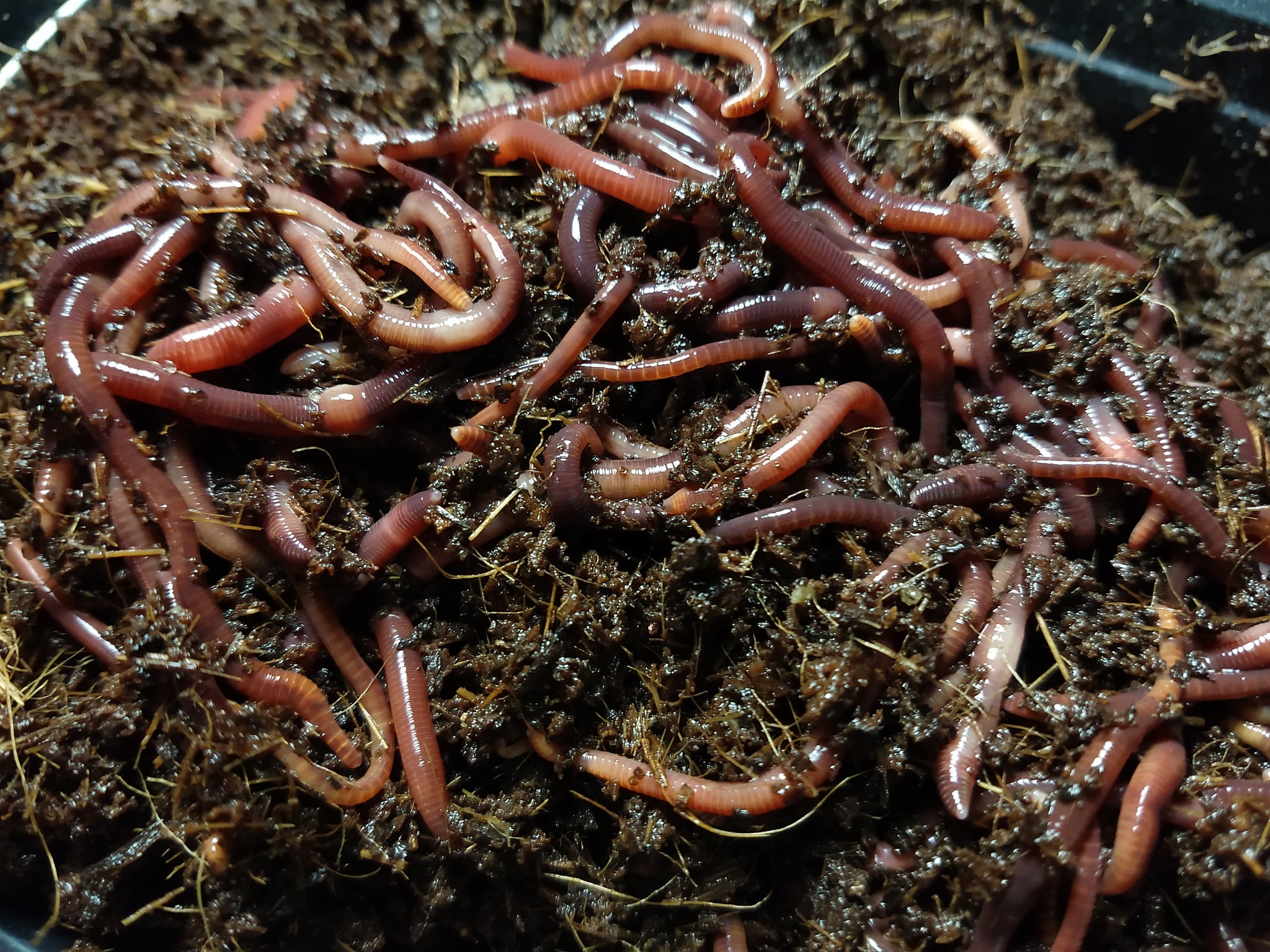Unlock the Keys of Red Wigglers: Your Overview to Composting Success
The combination of red wigglers right into composting methods offers a substantial chance for enhancing soil health and promoting sustainability. Comprehending their requirements and habits is essential for enhancing their possibility, from establishing up an appropriate worm container to feeding them the best products.

What Are Red Wigglers?
(Red Wiggler Express)Red wigglers, medically referred to as Eisenia fetida, are a types of earthworm primarily made use of in composting because of their impressive ability to decay raw material successfully. These worms are characterized by their reddish-brown coloration and a fractional body, typically measuring between 3 to 4 inches in length. Unlike various other earthworm varieties, red wigglers thrive in abundant, natural settings, making them ideal for vermicomposting systems.
Indigenous to North America, they are frequently located in decomposing leaves and compost piles, where they play a crucial function in nutrient recycling. Their adjustment to living in a moist, aerobic setting enables them to take in huge amounts of natural waste, breaking it down into nutrient-rich spreadings that enhance dirt health.
Red wigglers duplicate quickly, with a solitary worm with the ability of creating several cocoons weekly, each including numerous hatchlings. This fast reproduction price contributes to their effectiveness in composting procedures. They like temperature levels in between 60 ° F and 80 ° F, and their task degree raises considerably within this variety, additional aiding in the decomposition process. Recognizing the biology and actions of red wigglers is vital for maximizing their possibility in composting applications.
Advantages of Using Red Wigglers
Using the power of red wigglers in composting provides countless benefits that improve dirt wellness and advertise sustainable waste management. These exceptional organisms successfully damage down organic matter, changing kitchen area scraps and backyard waste right into nutrient-rich vermicompost. This completed item is remarkably helpful for plant development, as it enhances dirt structure, increases wetness retention, and improves nutrient availability.

(Red Wiggler Express)Furthermore, the existence of red wigglers in your composting system can speed up the composting procedure, generating top notch garden compost in a fraction of the time contrasted to standard techniques. The spreadings generated by these worms are additionally bristling with valuable microbes that better enrich the soil community.
Establishing Up Your Worm Container
Producing an effective worm bin is a straightforward procedure that can considerably enhance your composting efforts. The initial step is choosing an ideal container. Worm containers can be made from plastic storage containers, wood boxes, or readily available worm bins. Make certain the bin has appropriate water drainage and ventilation openings to maintain optimal wetness degrees and air movement.
Next, prepare the bedding product, which serves as the worms' environment. A mix of shredded newspaper, cardboard, and coconut coir functions well, offering a comfy setting for the worms.

Feeding Your Red Wigglers
To make sure the health and wellness and performance of your red wigglers, it is vital to offer them with a well balanced diet regimen that fulfills their dietary demands. Red wigglers grow on a diverse range of natural materials, which not just provide necessary nutrients but also advertise effective composting.
Begin by integrating kitchen scraps such as veggie peels, fruit cores, and coffee grounds. Avoid citrus fruits, onions, and garlic, as these can be detrimental to worm wellness. Furthermore, introduce shredded paper, cardboard, and dry fallen leaves to produce a well-aerated setting.
Feeding frequency must be kept track of; generally, worms can take in half their body weight in food weekly. It is critical to stay clear of overfeeding, as excess food can result in undesirable odors and draw in bugs. An excellent method is to include food in small amounts, allowing worms to refine it prior to presenting much more.
Keeping dampness levels is likewise important; the bed linen must be moist however not soaked. Be sure to routinely inspect the temperature level and pH levels of the bin to guarantee an optimum environment for your red wigglers, eventually improving their composting efficiency.
Harvesting and Utilizing Garden Compost
A successful composting procedure with red wigglers finishes in the abundant, dark garden compost recognized as vermicompost, which can considerably boost dirt health and wellness and plant growth. Gathering this nutrient-dense product typically occurs every 3 to six months, depending upon the size of your system and the quantity of organic matter being processed.
To gather, carefully different the compost from the worms and any undecomposed products. One reliable approach entails moving the contents of the bin to one side and adding fresh bed linens and food to the void, urging the worms to migrate. After a couple of days, the compost can be gathered from the opposite side.
It is necessary to utilize vermicompost correctly to optimize its benefits. It can be used as a leading clothing for garden beds, blended right into potting soil, or made into a nutrient-rich fluid fertilizer recognized as "worm tea." This application technique assists to supply crucial nutrients directly to plant origins, promoting healthier growth. By including vermicompost right into your horticulture program, you not only recycle natural waste yet additionally develop a thriving ecological community that supports sustainable gardening methods.
Verdict
In recap, red wigglers serve as remarkable allies in composting initiatives, changing organic waste into nutrient-rich vermicompost. By understanding the optimum problems for their environment, feeding needs, and compost harvesting methods, gardeners can enhance soil health and wellness and promote plant vitality.